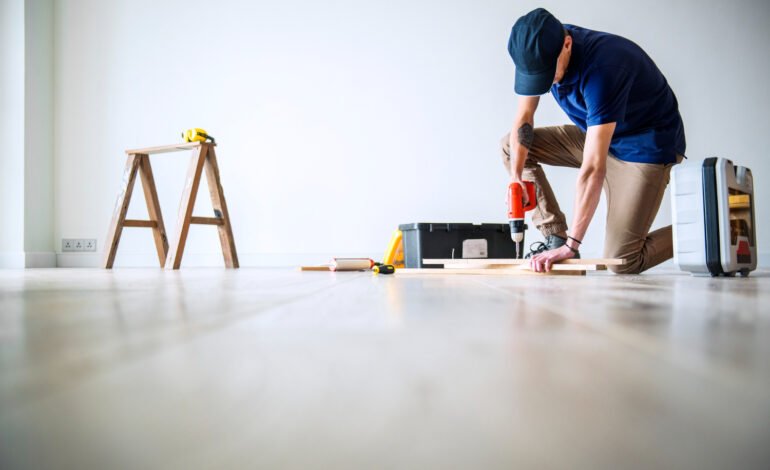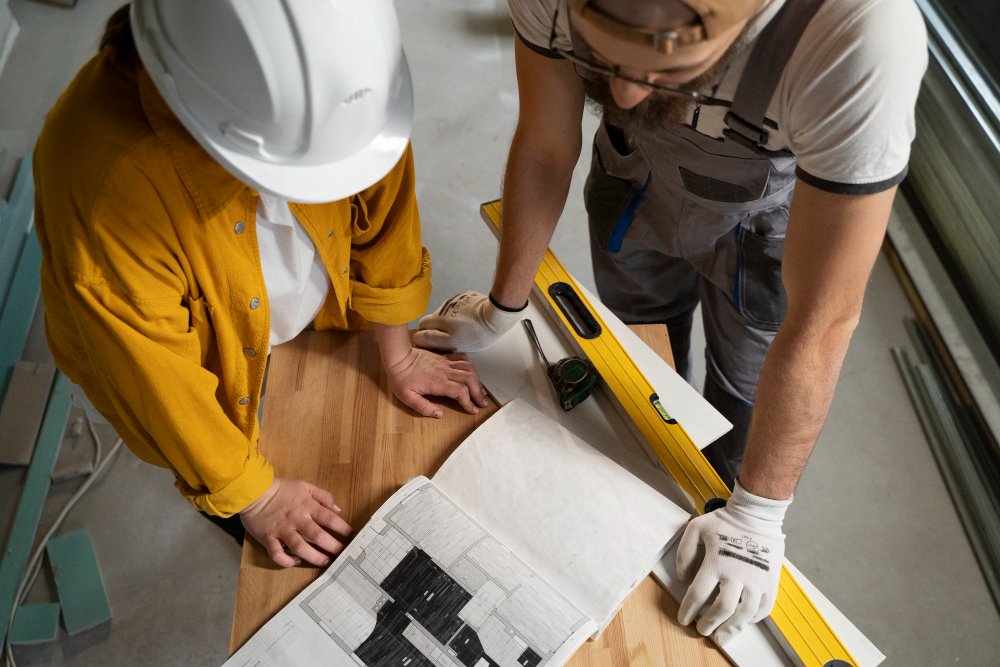The Ultimate Home Renovation Checklist: Concept to Completion

Renovating your home has to be a thrill rather than an impending, daunting task. It could be of a single room or an entire makeover in your space, but going in with a clear plan would just mean the key to working it all out. Without this kind of strong foundation, renovations easily spiral into messy, costly, and rather stressful projects.
A one-of-a-kind home renovation process guide, full of details step by step, guaranteeing organization, efficiency, and all while staying on budget. Thorough advice targeted to Pakistani homeowners, particularly in metropolises such as Lahore, to convert the renovation dream into a beautiful reality.
Setting Renovation Goals and Defining the Scope

Before hammering in the first nail or painting the first wall, it’s important to know why you’re renovating and what you want to accomplish.
1. Ask the Big Questions
- What’s my main goal? Is it to update an old kitchen, create more usable living space, or boost resale value on a house?
- What’s my budget ceiling? Knowing your financial limitations will help determine every choice from that point forward.
- How will life change after remodeling? For instance, a home office will suffice for remote workers when the layout of the kitchen is renovated to cater to cooking needs.
2. Prioritise Areas to Tackle
List down all the areas where you wish to renew. Set priorities and specify these specific outputs in terms of importance and feasibility. For example:
- High-priority areas need to be tackled first; this may include structural issues, a very bad state bathroom, etc.
- Low-priority but desirable improvements, for example, a garden overhaul, can come later.
3. Define Specific Outputs
Every renovation goal needs to be explicit about what it can deliver. Rather than just saying, “I’d like a better kitchen,” the more specific aim would be, “Change old cabinets to sleek modern designs, have a marble countertop, and enhance lighting.”
Creating a Realistic Timeline and Budget

Renovation is not only a matter of spending money but it also takes much time. Having a clear timeline and budget will, therefore, make the project move in a stride.
1. Drafting a timeline
- Work backward from the goal date. For instance, if your goal is to have a family dinner in your newly renovated house by Eid, calculate how long each phase of renovation will be.
- Divide the project into achievable milestones. For example:
- Week 1-2: Planning and acquisition of the necessary permits.
- Week 3-6: Undertaking structural changes and foundation work.
- Week 7-9: Finishing work (painting, flooring, fixtures).
- Account for delays. Leave some buffer time so that unexpected carrying out various activities is not held up for such unexpected roadblocks like the possibility of delay in delivery, rainy weather in Lahore, unavailability of labourers, etc.
2. Break Down the Budget
A detailed budget covers every facet of the project:
- Labour costs: Payments to contractors, masons, painters, and other specialized labor.
- Material costs: Tiles, wood, cement, and other main essentials.
- Permits and fees: Legal requirements (more later).
- Hidden expenses: Contingencies—such as fixing damage discovered later that might need to be addressed during the renovation.
Example Budget Breakdown for a Kitchen Renovation
- Cabinets and Countertops – PKR 200,000
- Tiles and Flooring Materials – PKR 150,000
- New appliances (stove, fridge): PKR 175,000
- Labour and miscellaneous costs (15% buffer): PKR 100,000
Total Estimate = PKR 625,000
3. Decide DIY vs. Professional

Some tasks, such as painting or furniture assembly, can be done as a DIY project. However, for complex tasks, it would be more cost- and time-efficient to hire contractors for plumbing and electrical fixes.
Understanding Permits and Legal Requirements

Adherence to permits and city codes is not just a paperwork formality; it is very important for ensuring the long-term value of your renovation. This is more important for the homeowner in Lahore or any similar big city in Pakistan.
1. Identify Necessary Permits
Depending on your renovation scope, you might need:
- Construction permits: For modifications to walls, roofs, or building expansions.
- Electrical and plumbing permits: Required for adding wiring, pipes, or fixtures.
- Zoning approvals: Local building codes often regulate structural changes.
2. Procedure for Obtaining Permits (Lahore Example)
The Lahore Development Authority (LDA) is the concerned body for issuance of building and re-modelling permits. The following steps should be taken:
- Submission of sketches and architectural drawings for approval
- Fees to be determined and paid as per work volume and size of the property
- Inspection to be accommodated and done by giving the requisite time before the finalization of the application
Non-compliance with the legal guidelines can lead to the imposition of a heavy fine or even result in a demolition order.
3. Save Your Records
Keep all documentation, permits, and receipts organised to avoid future legal or resale issues.
Finding and Hiring Contractors

The good professionals are going to make or break the renovation. Do your homework before signing a contract without getting quality results – or, worse, get quality results, but with headaches.
1. Shortlist Reliable Contractors
- Ask neighbors in neighborhoods undergoing renovation for recommendations.
- Check online reviews and ratings if available if contractors/ agencies have a website.
- Ask friends and family members for references; there may be some reliable masons, designers, or architects in their contact list.
Choosing the right professionals can make or break your renovation. To get quality results without headaches, do your homework before signing a contract.
2. Things to Discuss with Potential Contractors
When evaluating different options, ask key questions like:
- Can you provide previous work samples?
- Are you familiar with LDA permit standards (if based in Lahore)?
- Can you provide a detailed, itemised quote?
3. Red Flags
Avoid contractors who:
- Push for advance payments without documented agreements.
- Refuse to provide references or samples of previous work.
- Promise timelines or costs that seem too good to be true.
4. Write a Contract
Include:
- Scope of work.
- Payment structure.
- Timeline with milestones.
- Warranty for fittings and materials.
Design Considerations and Tips for Staying on Track
The design phase is where creativity shines. However, staying organised is crucial to avoid overruns or chaotic finishes.
1. Choose a Style and Stick to It
Decide on your preferred aesthetic—minimalist, traditional, contemporary—and filter all decisions through that lens. For example:
- Minimalist Design: Neutral colour palette, uncluttered functional spaces, simple fixtures.
- Pakistani Traditional Design: Intricate woodwork, vibrant tiles, bold paint shades.
2. Focus on Functionality
- Opt for multi-purpose furniture if space is limited.
- Design for practicality—like water-resistant materials for humid bathrooms.
3. Track Your Progress
To avoid timelines slipping:
- Conduct weekly check-ins with contractors.
- Create a checklist to monitor completed vs pending tasks.
4. Plan for Accessibility
Make your home future-proof. For example, installing slip-resistant materials or wider doorways can add long-term value.
Wrapping It Up
Remodeling your home is an exciting but also considerable way of improving your living standards as well as the value of your home. With a good plan, the right people, and some intelligent decision-making, you can turn any space into your dream space. Don’t forget to use this checklist as a guiding star at every stage while you brainstorm your goals, to admire the final reveal.
Your Next Step:
Start by creating your renovation goals today. With your vision clear, the rest will fall into place!






